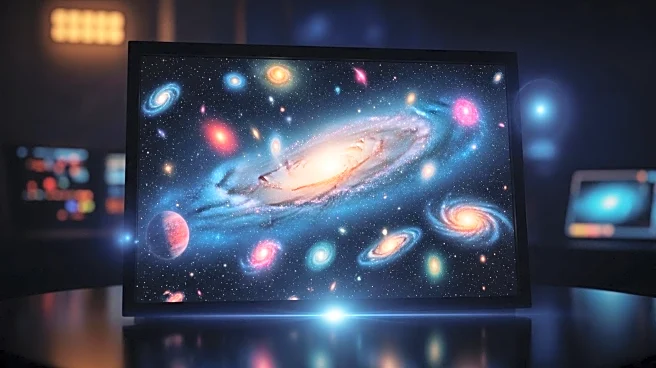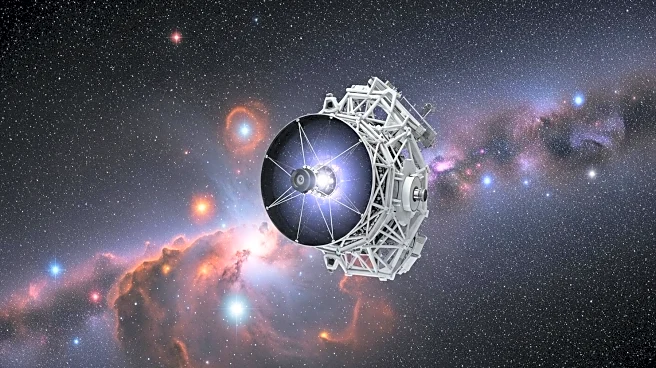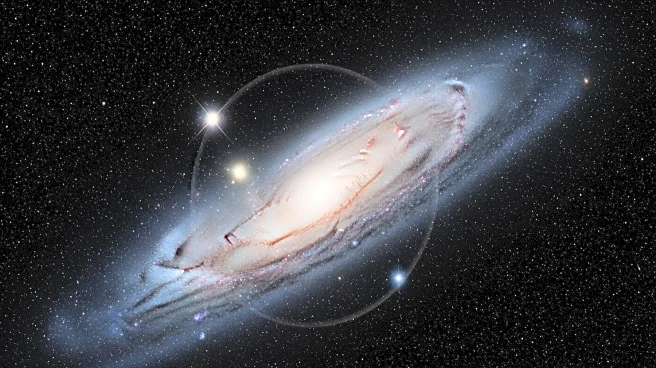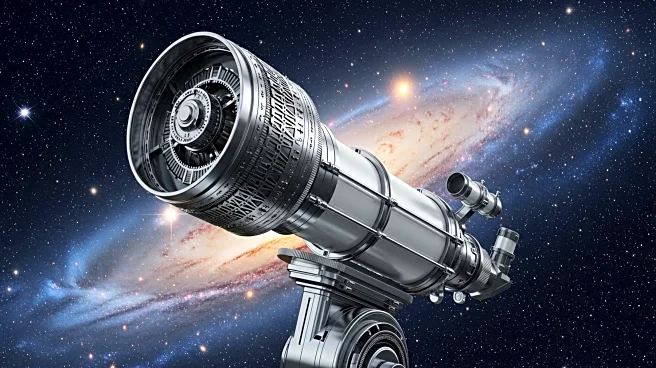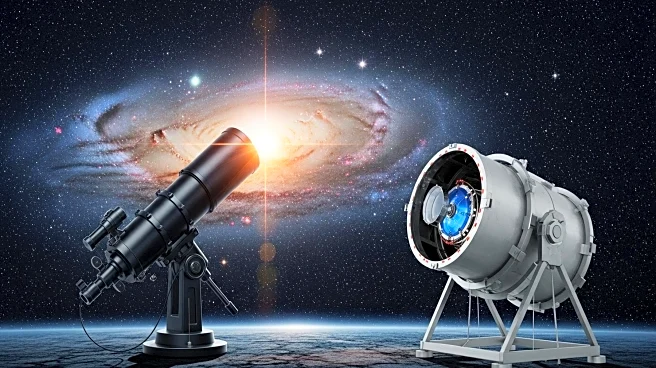What's Happening?
The Euclid Consortium has published the world's most extensive simulation of the universe, mapping 3.4 billion galaxies and tracking the gravitational interactions of over 4 trillion particles. Named Flagship 2, the simulation was created using an algorithm designed by astrophysicist Joachim Stadel and run on the supercomputer Piz Daint. The simulation aids in preparing the analysis of data from the Euclid space telescope, which has been mapping billions of galaxies since 2023. The project aims to study the distribution of dark energy and dark matter, challenging the standard cosmological model and potentially revealing new insights into the universe's expansion.
Why It's Important?
The release of Flagship 2 is a significant milestone in astrophysics, providing a detailed virtual model of the universe that aids in understanding cosmic phenomena. It supports the Euclid mission's goal of studying dark energy and dark matter, potentially leading to breakthroughs in cosmology. The simulation challenges existing models and encourages a reevaluation of the universe's composition and expansion, offering new opportunities for scientific discovery.
What's Next?
Euclid's observations will continue to be analyzed, with the next publication of data sets scheduled for spring 2026. Researchers anticipate surprises in the data that could challenge the standard cosmological model and reveal new characteristics of dark energy. The ongoing study of the universe's expansion and composition will drive future research in astrophysics.
Beyond the Headlines
The simulation highlights the intersection of technology and science, showcasing the power of supercomputers in advancing our understanding of the universe. It encourages exploration of unconventional ideas and may lead to long-term shifts in scientific approaches to studying cosmic phenomena.


